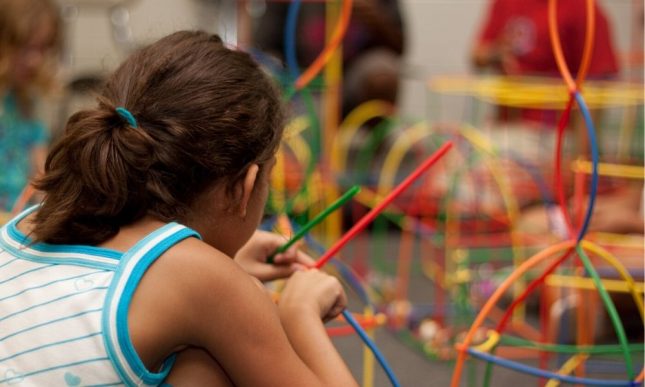As parents we have dreams for our children. We hope they will live happy lives with a sense of purpose. But how to we make sure children learn all the skills they’ll need in the early years to reach their potential? Teaching learning dispositions is one way to do that.
With new technology rapidly advancing the way in which people work and live, all children’s future place in the world is changing very quickly. How do we as parents and teachers prepare our children for a world that will be broadly unknown to us?
Learning dispositions give us one set of tools to develop a good foundation of learning skills in the early years.
What are learning dispositions?
The following are the most common learning dispositions that parents will encounter in early learning centres in New Zealand:
- courage and curiosity
- trust and playfulness
- perseverance, confidence and responsibility
- taking an interest
- being involved
- persisting with difficulty
- challenge and uncertainty, and
- expressing a point of view.
Content knowledge – the old way of learning
Education used to be based upon rote learning content. Remember the days of learning endless times tables and huge lists of spelling words.
This was a focus upon learning and retaining facts that were thought to be useful for children throughout their lives.
Whilst knowing a certain amount of facts is useful, for example, being able to say the alphabet before you start school, our children also need the skills to cope in a changing world. These skills are so vital in our modern, fast-paced ‘grown up’ world, that we have a word for it, we call this resilience.
Learning dispositions – a new way of learning
Early childhood learning dispositions are used to understand children’s ability to be self-motivated and be lifelong learners in a changing world.
Learning dispositions are characteristics or attitudes to learning that are life skills. They are closely aligned with the primary school key competencies. ‘Taking responsibility’, ‘persistence’ when faced with problems, and ‘coping with change’, are all learning dispositions or ways children respond to learning.
I saw dispositional learning in action when a group of seven year old children were given an unfamiliar maths problem to solve. Half the children recognising this problem as something they had not been taught said they could not do it, and made no attempt. The other children still recognised this as something new but they then applied what they knew from a similar situation and had a try.
The second group showed persistence and confidence in thinking they could solve an unknown problem. They showed a ‘can do’ attitude.
How are dispositions taught at early childhood services?
Planned experiences and the way teachers respond to children as they learn, support children’s dispositions to persist, find interests, take responsibility, select and assess their own learning goals, and take an active part in the programme.
Ask your early childhood teacher for information about how this works in their early childhood centre. They should be able to point to both how dispositions fit into the centre’s overall philosophy, and also how they are applied day-to-day.
You can also find out more about early childhood terminology on the Education Review Office (ERO) website.
How can parents teach dispositional learning at home?
Parents are powerful teachers of learning dispositions for their children.
Rather than give your child the answer to a question help your child to find an answer for themselves. Accept that finding an incorrect answer, and recognising that this is not quite correct, is as important as finding the right solution.
Work together to find places that will give you the information or skills you need.
This could be a library, local person with specialist knowledge like a potter or baker, or even a neighbour that knows the history of your community. As a parent it’s important to show your child you are learning too.
You can learn with and from your child. For instance, parents can model how to cope with trying something new and not quite getting it right first time. Model how to celebrate success as well as cope with disappointment. If you show a ‘can do’ attitude, and that you’re not afraid of making mistakes, then your child will do the same.
Children who see themselves as someone who tries new things, keeps going when it’s hard, knows when to stop and ask for help, learns from making mistakes, and has good support networks, are children who will thrive in an unknown world.
Now that you know more about learning dispositions, find out more about early childhood development in our Preschoolers section.


